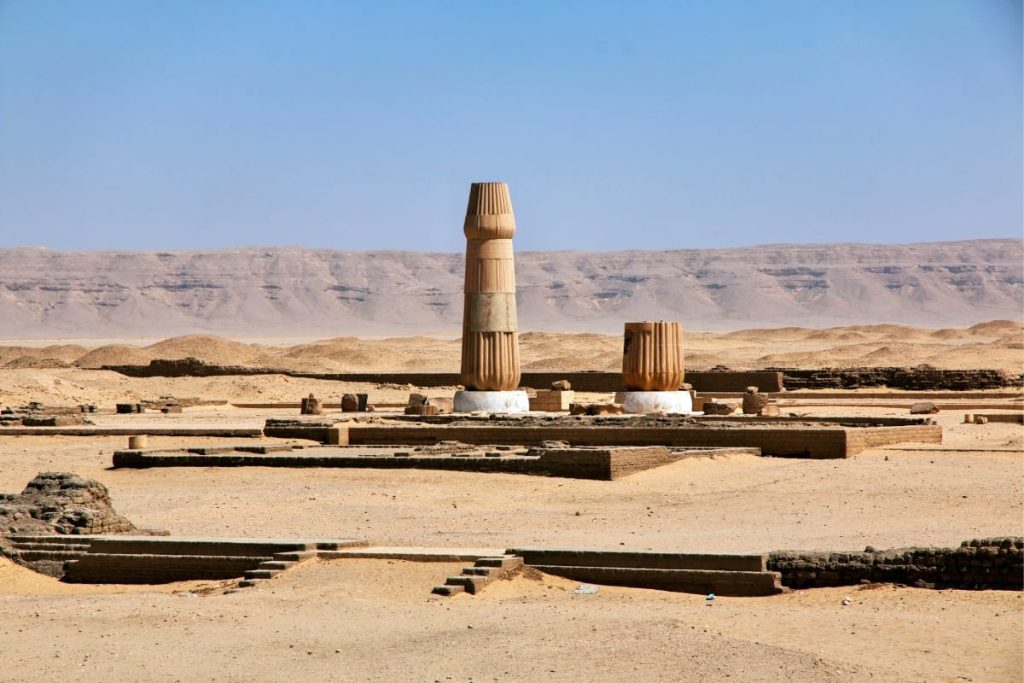The Amarna letters are an archive, written on clay tablets, primarily consisting of diplomatic correspondence between the Egyptian administration and its representatives in Canaan and Amurru, or neighboring kingdom leaders; during the New Kingdom, between c. 1360–1332 BCE. The letters were found in Upper Egypt at el-Amarna; the modern name for the ancient Egyptian capital of Akhetaten, founded by pharaoh Akhenaten (1350s–1330s BCE) during the Eighteenth Dynasty of Egypt.

THE PALACE AT EL AMARNA WHERE THE LETTERS WERE FOUND
These letters, comprising cuneiform tablets written primarily in Akkadian – the regional language of diplomacy for this period – were first discovered around 1887 by local Egyptians who secretly dug most of them from the ruined city of Amarna, and sold them in the antiquities market. They had originally been stored in an ancient building that archaeologists have since called the Bureau of Correspondence of Pharaoh.
The archive contains a wealth of information about cultures, kingdoms, events, and individuals in a period from which few written sources survive. It includes correspondence from Akhenaten’s reign (Akhenaten who was also titled Amenhotep IV), as well as his predecessor Amenhotep III’s reign. The tablets consist of over 300 diplomatic letters; the remainder comprises miscellaneous literary and educational materials.
The Amarna Letters Special Significance
Moreover, these tablets shed much light on Egyptian relations with Babylonia, Assyria, Syria, Canaan, and Alashiya (Cyprus) as well as relations with Mitanni, and the Hittites. The letters have been important in establishing both the history and the chronology of the period. Letters from the Babylonian king, Kadashman-Enlil I, anchor the timeframe of Akhenaten’s reign to the mid-14th century BCE.
They also contain the first mention of a Near Eastern group known as the Habiru, whose possible connection with the Hebrews—due to the similarity of the words and their geographic location—remains debated.
Other rulers involved in the letters include Tushratta of Mitanni, Lib’ayu of Shechem, Abdi-Heba of Jerusalem. In addition, we hear about Biridiya who was the ruler of Megiddo in the 14th century BCE. Biridiya authored five of the Amarna letters correspondence.
And the quarrelsome king, Rib-Hadda, of Byblos, who, in over 58 letters, continuously pleads for Egyptian military help. Specifically, the letters include requests for military help in the north against Hittite invaders, and in the south to fight against the Habiru.
The known tablets total 382, of which 358 have been published by the Norwegian Assyriologist Jørgen Alexander Knudtzon in his work, which came out in two volumes (1907 and 1915) and remains the standard edition to this day. The texts of the remaining 24 complete or fragmentary tablets excavated since Knudtzon have also been made available. The Amarna letters are of great significance for biblical studies as well as Semitic linguistics, since they shed light on the culture and language of the Canaanite peoples in pre-biblical times.








